Gandhara Civilization
Gandhara Civilization: The Crossroads of Ancient Cultures
The Gandhara Civilization flourished between the 1st century BCE and 5th century CE in what is now northern Pakistan and eastern Afghanistan. This remarkable civilization emerged at the crossroads of multiple cultures, creating a unique fusion of Greek, Persian, and Indian influences that produced some of the most distinctive art and architecture in world history. Situated along vital trade routes connecting East and West, Gandhara played a crucial role in the spread of Buddhism and the development of a rich cultural heritage that continues to fascinate scholars and visitors alike.
Geographical Location and Historical Timeline
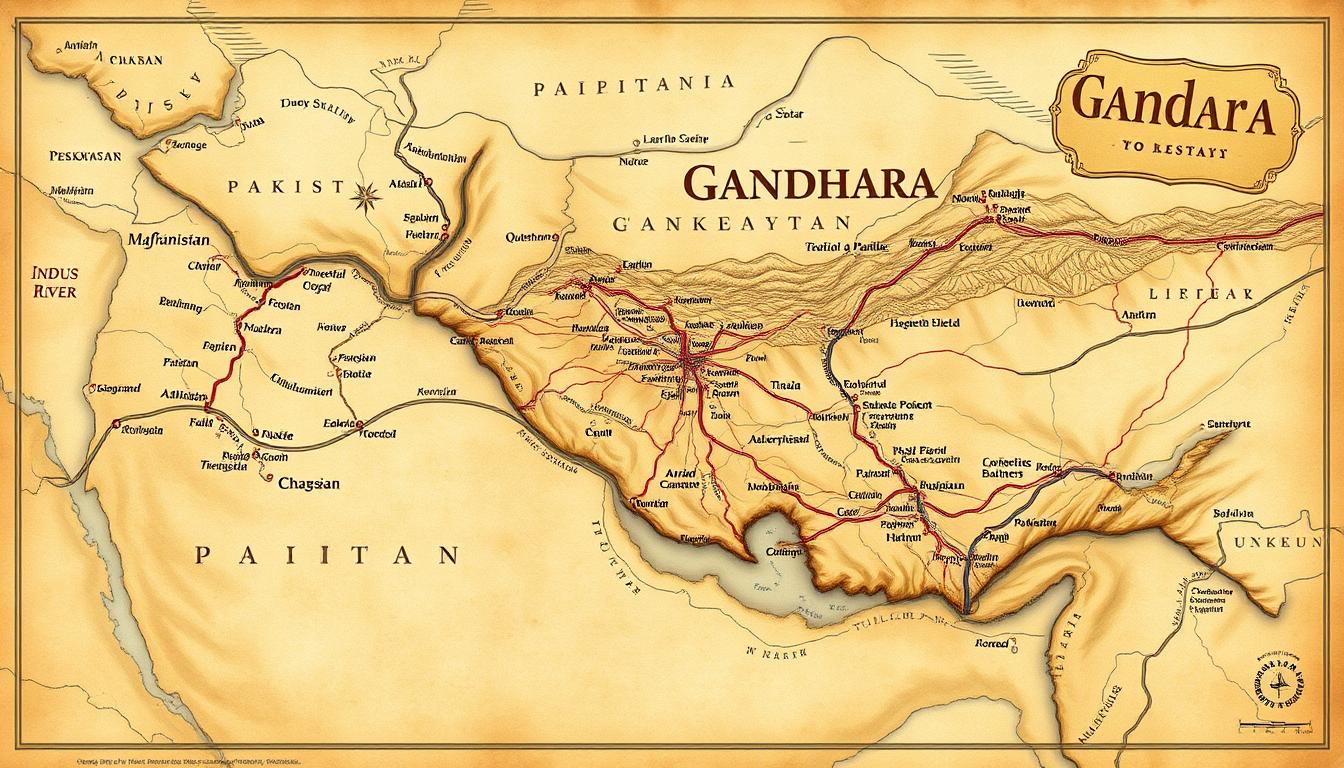
The geographical extent of the Gandhara Civilization encompassed parts of modern-day Pakistan and Afghanistan
The core of the Gandhara region was centered around the Peshawar Valley and extended to include the Swat Valley, Dir, Buner, and Bajaur in present-day Pakistan. At its height, Greater Gandhara’s influence spread to the Kabul Valley in Afghanistan and the Potwar plateau in Punjab. This strategic location at the eastern edge of the Iranian plateau and the western edge of the Indian subcontinent positioned Gandhara as a crucial gateway between Central Asia and South Asia.
Timeline of the Gandhara Civilization
| Time Period | Ruling Power | Key Developments |
| 6th century BCE | Achaemenid Empire | First historical mentions of Gandhara; introduction of Persian influences |
| 326-324 BCE | Alexander the Great | Introduction of Hellenistic influences; Greek settlements established |
| 324-185 BCE | Mauryan Empire | Emperor Ashoka promotes Buddhism; construction of early stupas |
| 250-190 BCE | Indo-Greeks | Fusion of Greek and Indian artistic traditions begins |
| 1st century BCE – 1st century CE | Indo-Scythians and Indo-Parthians | Further cultural blending; continued Buddhist patronage |
| 1st-5th century CE | Kushan Empire | Golden Age of Gandhara; peak of artistic achievement; spread of Buddhism |
| 5th century CE | White Huns (Hephthalites) | Destruction of Buddhist sites; beginning of decline |
| 9th-10th century CE | Hindu Shahi | Final phase before Muslim conquests |
The name “Gandhara” itself has several possible origins. One theory suggests it derives from the Sanskrit word “gandha,” meaning “fragrance,” referring to the aromatic herbs and spices traded in the region. Another theory connects it to “Qand/Gand,” meaning “pool of water,” which aligns with the region’s geography, as the Peshawar valley was once characterized by marshes and lakes.
Discover the Ancient Trade Routes
Want to learn more about how Gandhara connected to the broader ancient world? Explore our comprehensive guide to the Silk Road trade routes and their impact on cultural exchange.
Cultural Fusion: The Hallmark of Gandhara
What makes the Gandhara Civilization truly remarkable is its extraordinary synthesis of diverse cultural influences. As a crossroads for traders, pilgrims, and conquerors, Gandhara absorbed elements from Greek, Persian, Indian, and Central Asian traditions, creating a unique cultural identity that is still celebrated today.
Greek and Hellenistic Influences
Following Alexander the Great’s campaigns in the 4th century BCE, Hellenistic influences became firmly established in the region. Greek artistic techniques, architectural elements, and even religious iconography were incorporated into local traditions. The Greek impact is most visible in Gandharan sculpture, where classical Greek naturalism was applied to Buddhist subjects, creating a distinctive artistic style.
Evidence of Greek influence can be seen in:
- The use of Corinthian columns in architecture
- Naturalistic human figures in sculpture
- Draped clothing reminiscent of Greek togas
- Realistic facial features and expressions
- The introduction of perspective in relief carvings
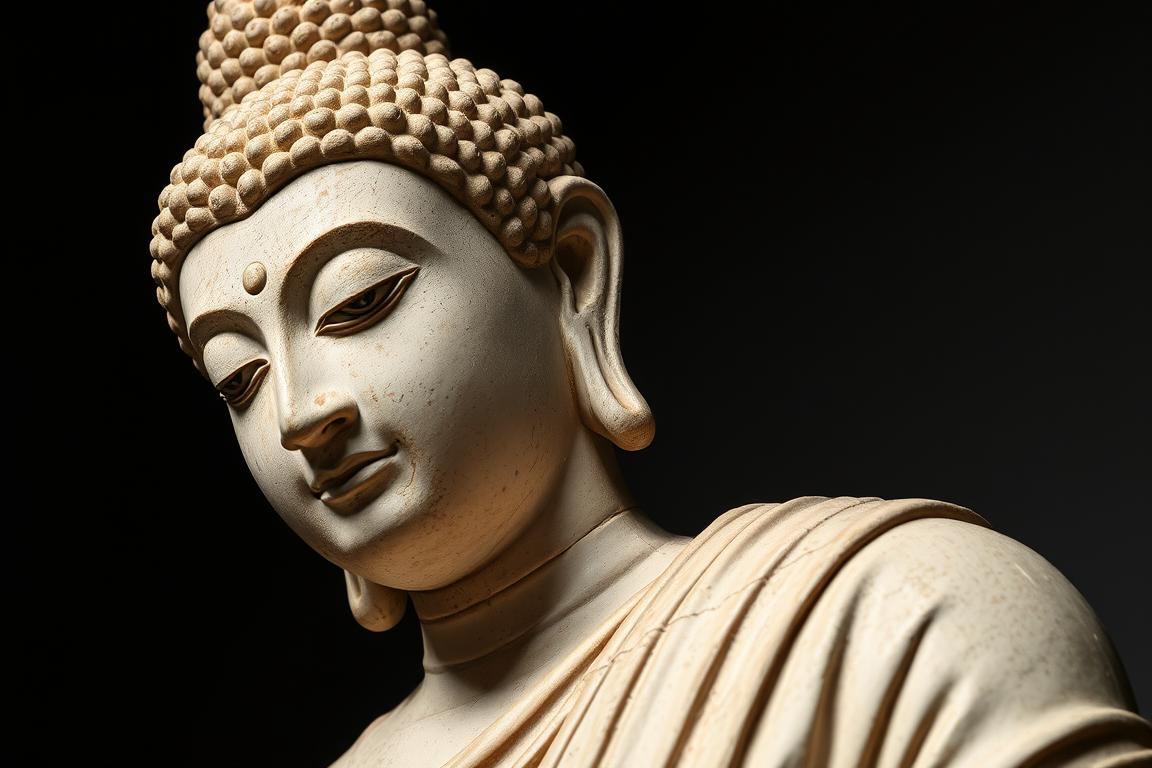
Gandharan Buddha sculpture showing clear Greek influence in the realistic treatment of drapery and facial features
Persian and Central Asian Elements
The Persian Achaemenid Empire had controlled Gandhara before Alexander’s arrival, leaving lasting influences on administrative systems, artistic motifs, and architectural techniques. Later, as the Kushans established their empire, Central Asian elements were incorporated into Gandharan culture.

Architectural remains showing Persian-influenced elements in Gandharan structures
Indian Cultural Foundations
Despite foreign influences, Gandhara remained fundamentally rooted in Indian cultural traditions. Buddhist philosophy and religious practices formed the spiritual foundation of Gandharan society, while Indian artistic conventions provided the framework that was later modified by foreign influences.

Relief carving depicting Indian mythological scenes in Gandharan artistic style
The Synthesis of Traditions
What makes Gandharan culture truly unique is not simply the presence of these diverse influences, but how they were synthesized into a coherent and distinctive whole. In Gandharan art, for example, we see Buddha depicted with the idealized physique of a Greek god, wearing robes that fall in classical Greek folds, yet displaying the symbolic markers (ushnisha, urna, elongated earlobes) that identify him as Buddha in the Indian tradition.
This cultural fusion extended beyond art to encompass:
- Religious practices that combined Buddhist, Greek, and local traditions
- Architectural styles that merged Indian, Persian, and Greek elements
- A multilingual society using Gandhari, Sanskrit, Greek, and other languages
- Coinage that combined Greek artistic techniques with local symbols
Explore Buddhist Art History
Fascinated by the artistic innovations of Gandhara? Dive deeper into the evolution of Buddhist art across Asia and see how Gandharan styles influenced religious art for centuries.
Key Archaeological Sites of the Gandhara Civilization
The archaeological remains of the Gandhara Civilization provide invaluable insights into this remarkable culture. Major excavations have revealed cities, religious complexes, and countless artifacts that help us understand the daily life, artistic achievements, and religious practices of ancient Gandhara.
Taxila: The Educational and Administrative Center

Aerial view of the archaeological remains at Taxila, one of the most important cities of ancient Gandhara
Located near modern-day Islamabad in Pakistan, Taxila (ancient Takshasila) was one of the most important cities of the Gandhara Civilization. It served as a major educational center, often compared to ancient universities, where students from across Asia came to study subjects ranging from medicine and mathematics to astronomy and the arts.
Taxila consists of several archaeological sites representing different periods:
- Bhir Mound – The oldest city, dating to the Achaemenid period
- Sirkap – The Indo-Greek city built on a grid plan
- Sirsukh – The Kushan-era city with massive defensive walls
Notable discoveries at Taxila include:
- The Dharmarajika Stupa, believed to have been commissioned by Emperor Ashoka
- The Jandial Temple, showing Greek architectural influences
- The Double-Headed Eagle Stupa, demonstrating cultural fusion
- Numerous monasteries, houses, shops, and civic buildings
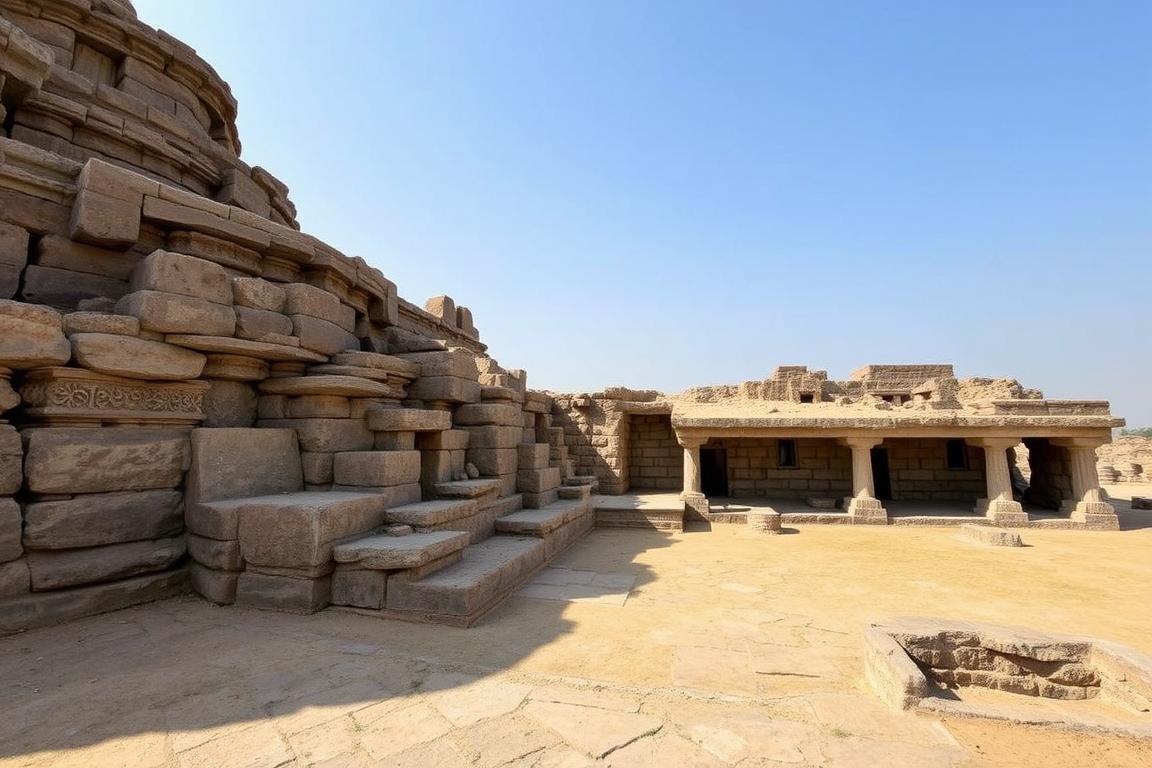
Remains of the Dharmarajika Stupa at Taxila, believed to have been commissioned by Emperor Ashoka
Peshawar Valley: The Heart of Gandhara
The Peshawar Valley (ancient Purushapura) served as the heartland of the Gandhara Civilization and was the capital of the Kushan Empire during its golden age. This fertile valley contains numerous archaeological sites that have yielded remarkable artifacts.
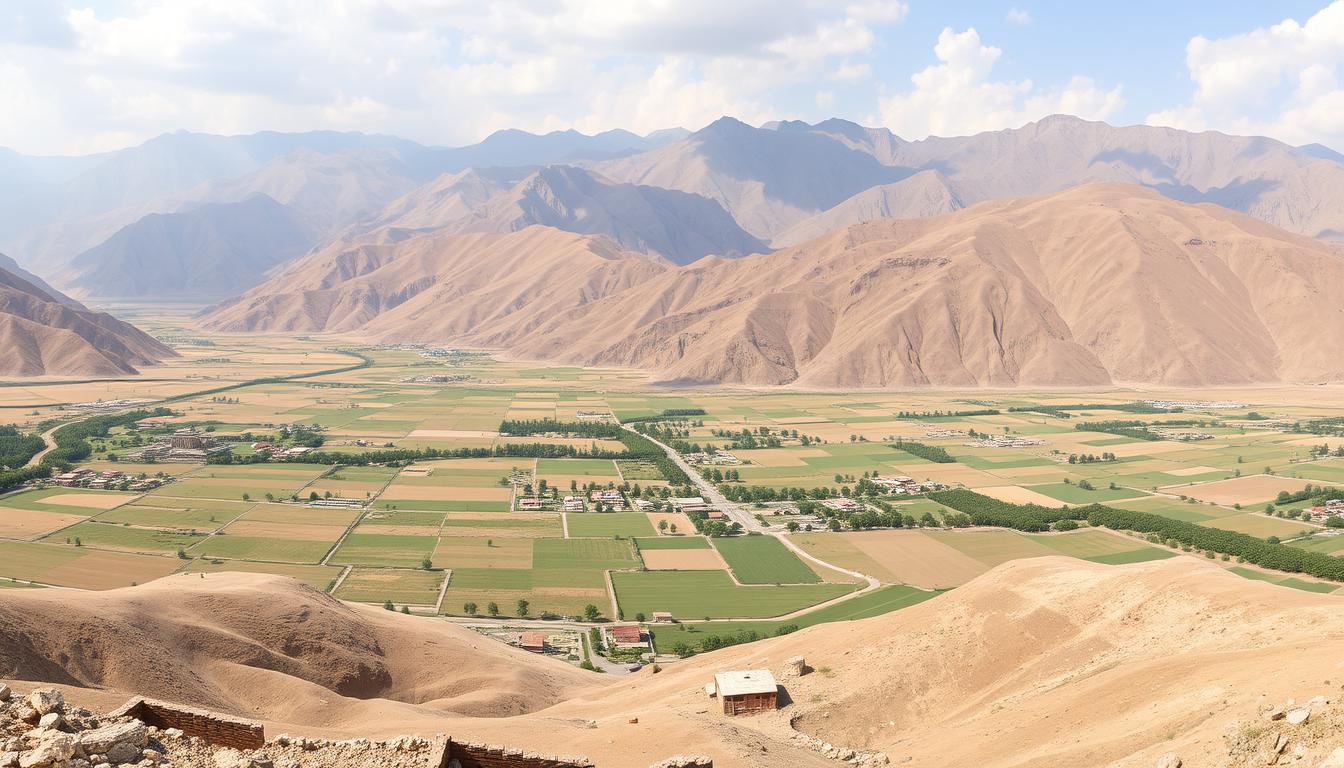
The Peshawar Valley, heart of the ancient Gandhara Civilization
Key sites in the Peshawar Valley include:
- Shahji-ki-Dheri – Site of the famous Kanishka Stupa, once one of the tallest buildings in the ancient world
- Gor Khuttree – An ancient caravanserai with multiple cultural layers
- Pushkalavati (modern Charsadda) – One of the earliest urban centers in the region
Swat Valley: The Buddhist Sanctuary
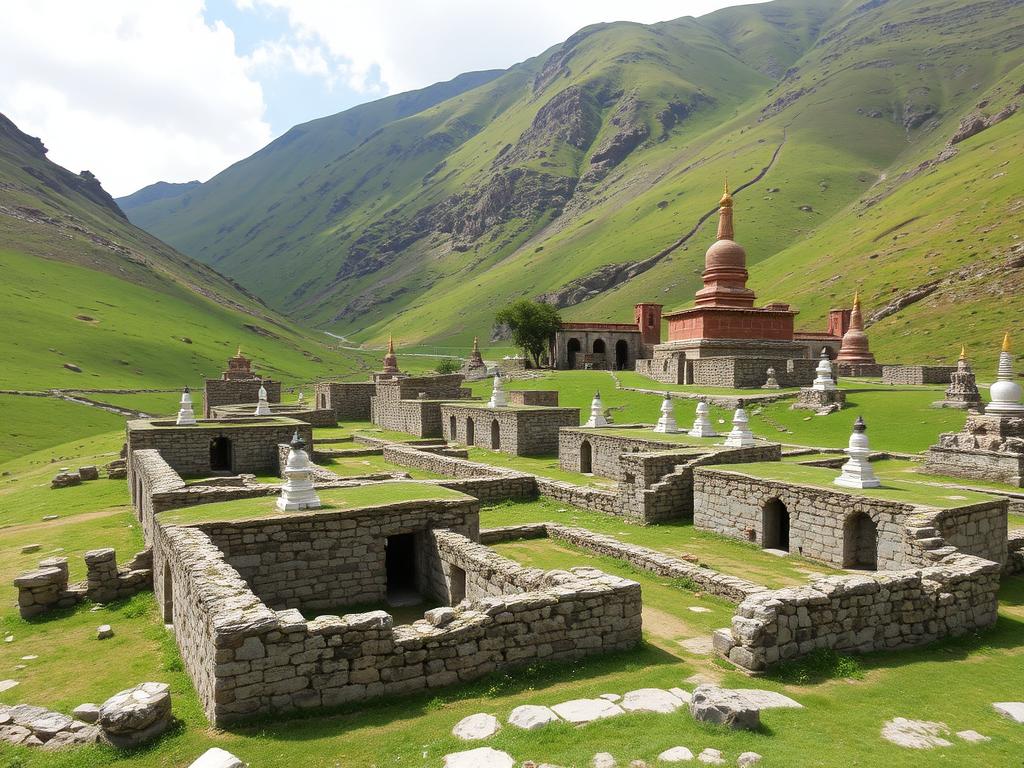
Ruins of a Buddhist monastery complex in the Swat Valley
The picturesque Swat Valley (ancient Uddiyana) was a center of Buddhist learning and monastic activity. The valley is dotted with the remains of stupas, monasteries, and rock carvings that attest to its religious significance.
Notable sites in the Swat Valley include:
- Butkara – A large stupa complex with multiple construction phases
- Saidu Sharif – Site of important Buddhist sculptures
- Panr – A well-preserved monastic complex
- Jehanabad – Location of a massive rock-carved Buddha image
Takht-i-Bahi: The Mountaintop Monastery

The well-preserved Buddhist monastery complex of Takht-i-Bahi, a UNESCO World Heritage Site
Located on a hill near modern Mardan, Takht-i-Bahi (Throne of Origins) is one of the most impressive and well-preserved Buddhist monastic complexes from the Gandharan period. Built in the 1st century CE, it continued to function until the 7th century CE.
The complex includes:
- A main stupa court
- Assembly halls for monks
- Meditation cells arranged around small courtyards
- A tantric monastic complex
- Residential quarters
Takht-i-Bahi’s remote location helped protect it from invaders, making it one of the best-preserved examples of Gandharan monastic architecture. Today, it is a UNESCO World Heritage Site and provides valuable insights into Buddhist monastic life during the Gandharan period.
Iconic Artifacts: The Fasting Buddha and Other Masterpieces
Among the thousands of artifacts recovered from Gandharan sites, certain masterpieces stand out for their artistic excellence and cultural significance. These include:
- The Fasting Buddha – This famous sculpture from Sikri depicts the emaciated figure of Siddhartha during his period of extreme asceticism before achieving enlightenment. The realistic depiction of the skeletal body demonstrates the Greek influence on Gandharan art.
- The Bimaran Reliquary – A gold casket discovered at Bimaran in Afghanistan, featuring some of the earliest known depictions of the Buddha in human form.
- Buddha Heads – Numerous finely carved Buddha heads showing the idealized features that became characteristic of Gandharan art.
- Narrative Relief Panels – Stone panels depicting scenes from the life of Buddha and Jataka tales (stories of his previous lives).

The famous Fasting Buddha sculpture, depicting Siddhartha during his period of extreme asceticism

Buddha head showing Greco-Buddhist artistic fusion

Bimaran Reliquary with early Buddha depictions
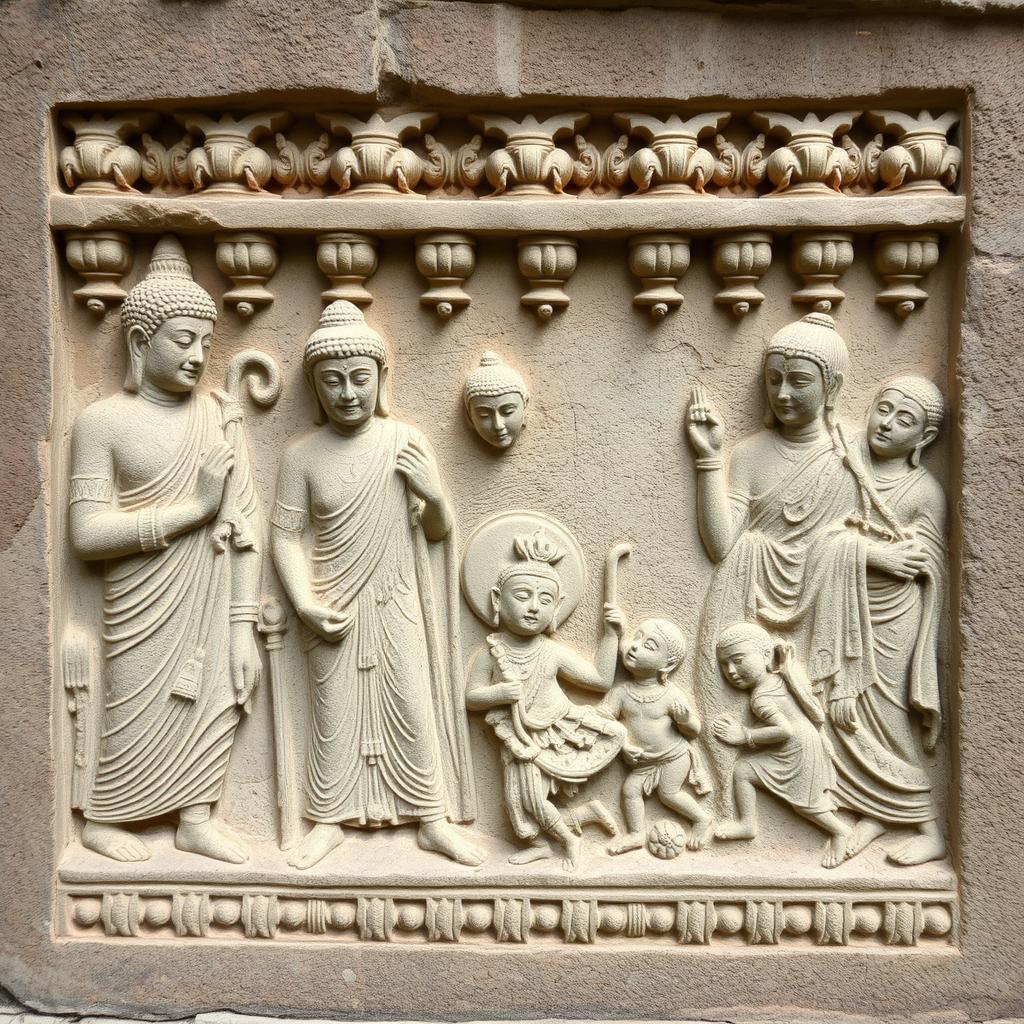
Narrative relief panel depicting Buddha’s life stories
The Buddhist Legacy of Gandhara
Buddhism formed the spiritual foundation of the Gandhara Civilization, and the region played a pivotal role in the development and spread of this world religion. From innovative artistic representations to philosophical advancements, Gandhara’s contributions to Buddhism were profound and far-reaching.
The Evolution of Buddha Imagery
One of Gandhara’s most significant contributions to Buddhist culture was the development of the anthropomorphic Buddha image. Before the Gandharan innovation, Buddhist art typically represented the Buddha through symbols such as the Bodhi tree, an empty throne, or footprints, rather than depicting him in human form.
Gandharan artists, influenced by Greek traditions of representing deities in human form, began creating sculptures of the Buddha with distinctive characteristics:
- Wavy hair arranged in a topknot (ushnisha)
- A protuberance on the skull symbolizing wisdom
- Elongated earlobes from wearing heavy earrings as a prince
- The urna, a dot between the eyebrows
- Monk’s robes with flowing, Greek-style drapery
- Serene facial expression with half-closed eyes
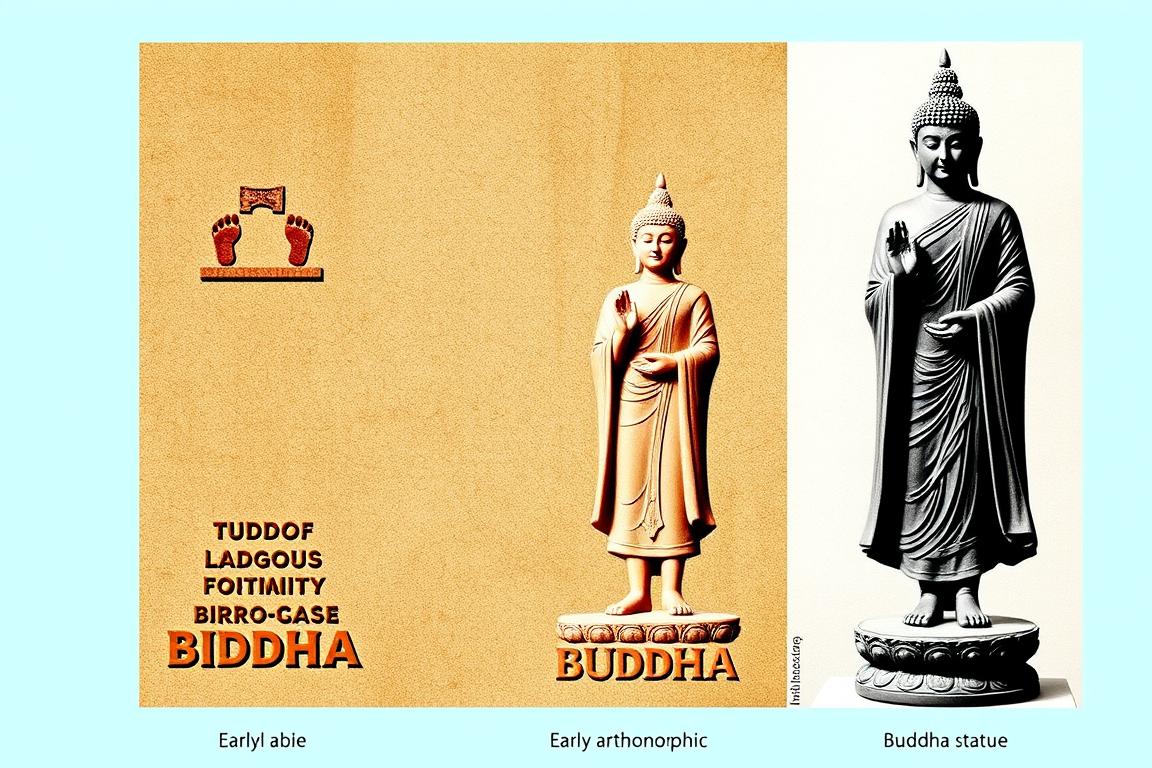
The evolution of Buddha imagery in Gandharan art, from symbolic representations to anthropomorphic figures
This Gandharan innovation of depicting Buddha in human form spread throughout Asia, influencing Buddhist art in China, Japan, Korea, and Southeast Asia. The Buddha image we recognize today owes much to the artistic developments that occurred in ancient Gandhara.
Stupas and Monastic Complexes
The landscape of Gandhara was dotted with stupas (reliquary mounds) and monastic complexes that served as centers of Buddhist learning, worship, and community life. These architectural achievements reflect both the religious devotion of the Gandharan people and their artistic sophistication.

Reconstructed model of a typical Gandharan stupa showing key architectural elements
The typical Gandharan stupa consisted of:
- A square or circular base (medhi)
- A cylindrical drum
- A hemispherical dome (anda)
- A harmika (square railing) at the top
- A central pillar (yasti) supporting umbrella discs (chattras)
- A circumambulatory path (pradakshina patha) for worshippers
- Decorative reliefs depicting Buddhist stories
The most famous stupa in Gandhara was the Kanishka Stupa in Peshawar, commissioned by the Kushan emperor Kanishka in the 2nd century CE. According to Chinese pilgrims who visited centuries later, it stood about 400 feet tall and was one of the wonders of the ancient world.
Gandhara as a Buddhist Learning Center
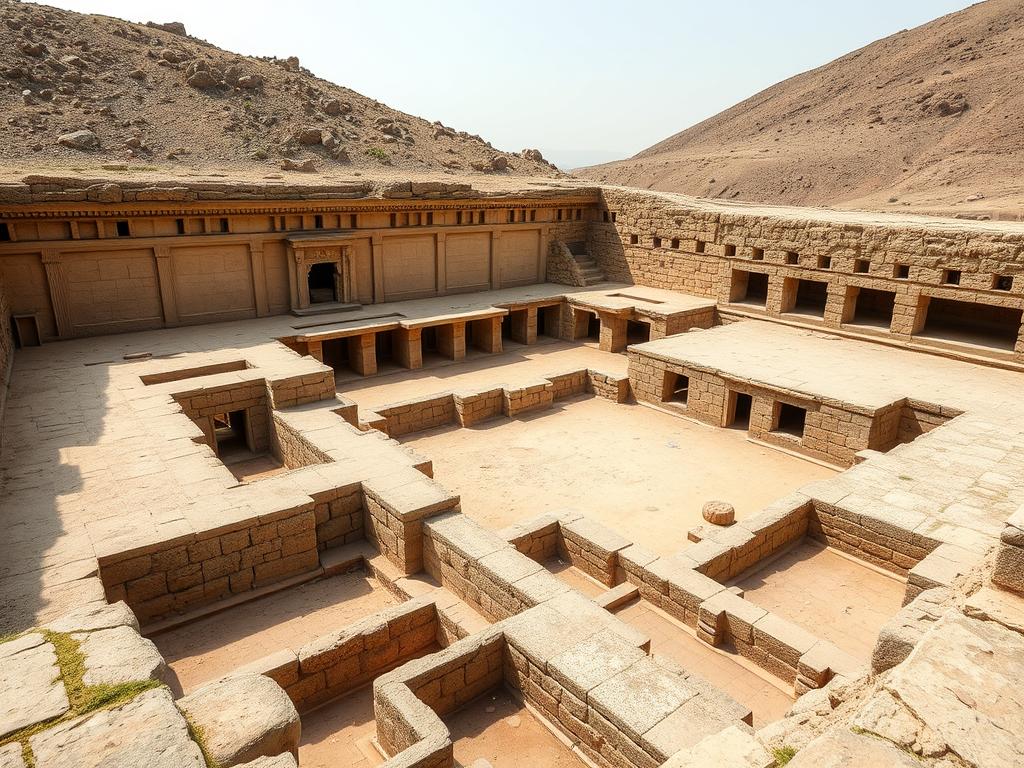
Remains of a Buddhist learning center in Gandhara showing lecture halls and residential cells
Gandhara became a major center for Buddhist scholarship, attracting monks and students from across Asia. Monasteries functioned not only as religious institutions but also as centers of learning where Buddhist texts were studied, copied, and translated.
Key aspects of Gandhara’s role in Buddhist education included:
- Development of Mahayana Buddhist thought
- Translation of Buddhist texts into local languages
- Creation of commentaries on Buddhist philosophy
- Training of monks who would spread Buddhism to Central Asia and China
The Silk Road Connection: Spreading Buddhism Eastward
Gandhara’s strategic location on trade routes connecting South Asia with Central Asia and China positioned it as a crucial link in the spread of Buddhism along the Silk Road. Merchants, monks, and missionaries traveled these routes, carrying Buddhist teachings, texts, and artistic styles eastward.
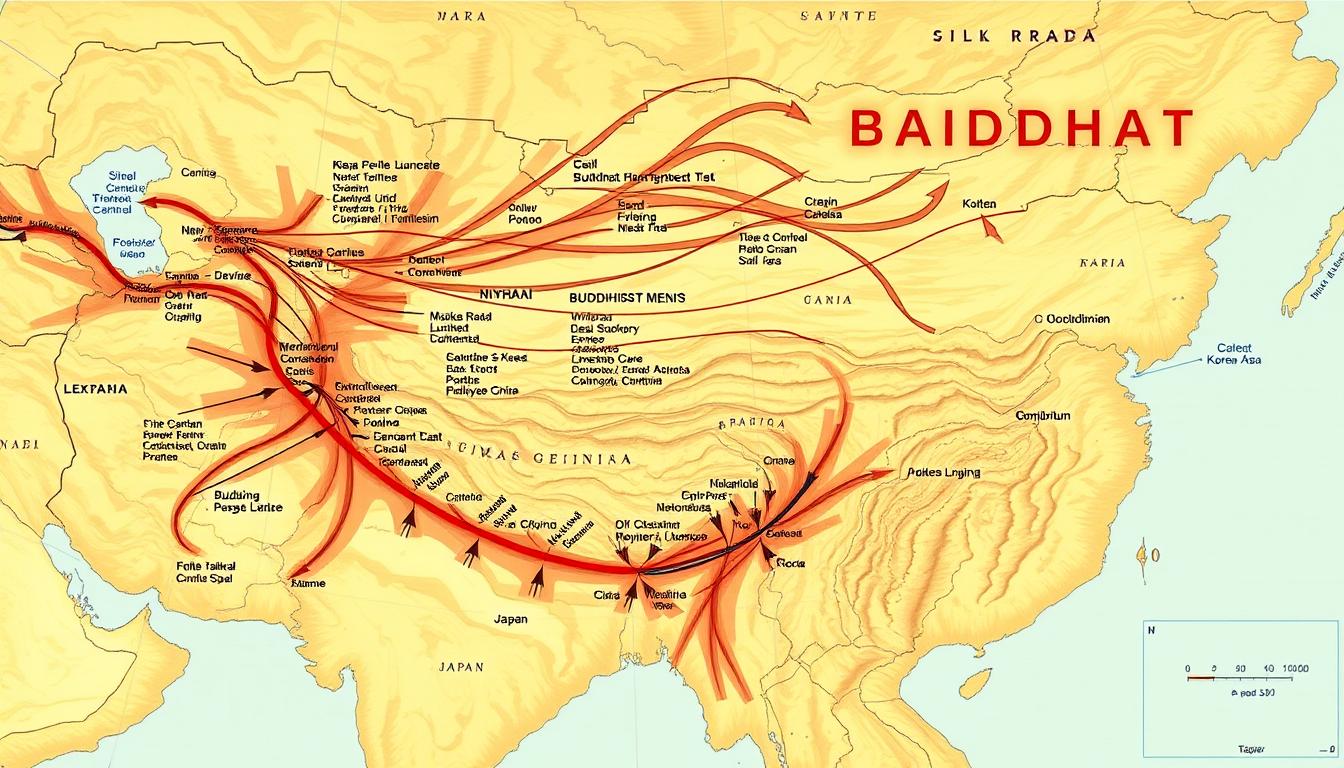
Map illustrating the spread of Buddhism from Gandhara along the Silk Road to China and beyond
Evidence of Gandhara’s influence on Buddhism in Central and East Asia includes:
- Buddhist cave temples in China’s Xinjiang region showing Gandharan artistic influences
- Translations of Buddhist texts from Gandhari language into Chinese
- Gandharan-style Buddha images found throughout Central Asia
- Accounts by Chinese pilgrims who visited Gandhara to study Buddhism
Famous Chinese Buddhist pilgrims like Faxian (5th century CE) and Xuanzang (7th century CE) traveled to Gandhara to visit sacred sites, collect texts, and study with local masters. Their detailed accounts provide valuable information about Gandhara during its later period and testify to its importance as a Buddhist center.
Explore More About Buddhist Heritage
Interested in learning more about how Buddhism spread across Asia? Discover the fascinating journey of Buddhist teachings, art, and architecture from India to East Asia.
Gandharan Art: A Unique Cultural Expression
The artistic tradition that emerged in Gandhara represents one of the most distinctive and influential styles in Asian art history. Often referred to as Greco-Buddhist art, it combined elements from multiple cultural traditions to create something entirely new and influential.
Characteristics of Gandharan Sculpture
Gandharan sculpture is immediately recognizable for its unique combination of subject matter and style. Key characteristics include:
- Naturalistic Representation – Realistic human anatomy influenced by Greek artistic traditions
- Detailed Drapery – Flowing robes with cascading folds reminiscent of Greek statuary
- Individualized Faces – Distinct facial features rather than stylized representations
- Narrative Focus – Emphasis on storytelling through relief panels
- Symbolic Elements – Buddhist iconography combined with Hellenistic artistic techniques

Detailed Gandharan sculpture demonstrating the characteristic drapery and naturalistic features
Materials and Techniques
Gandharan artists worked with a variety of materials, adapting their techniques to suit each medium:
- Schist Stone – A gray-blue stone that was carved and polished to create sculptures and relief panels
- Stucco – A plaster-like material used for architectural decoration and free-standing sculptures
- Terracotta – Clay used for smaller figurines and decorative elements
- Bronze – Used for smaller, portable sculptures
- Gold and Silver – Precious metals used for reliquaries and decorative elements
Many Gandharan sculptures were originally painted in bright colors and sometimes adorned with gold leaf, though most have lost their coloration over time. The largest sculptures were typically made of stucco over a core of mud brick or stone, while schist was used for smaller, more detailed works.
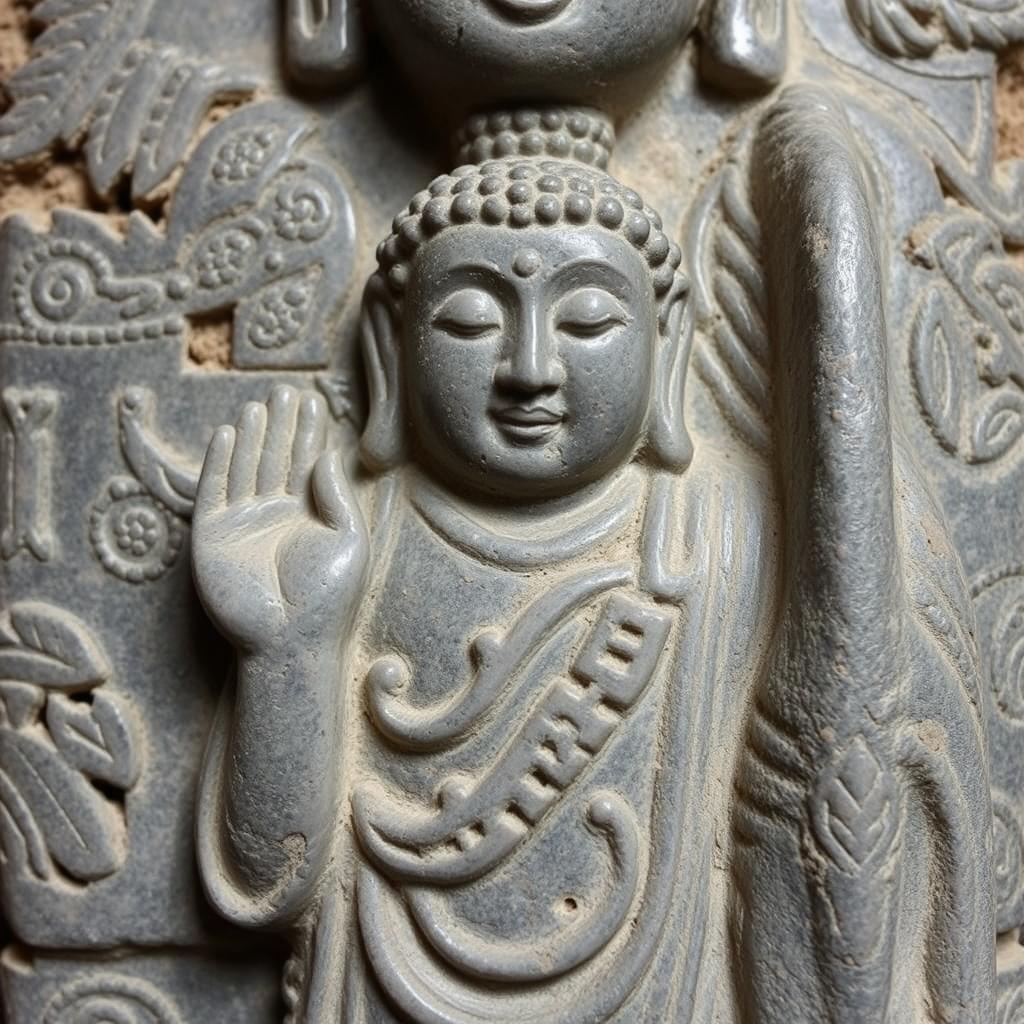
Schist stone sculpture showing fine detail work
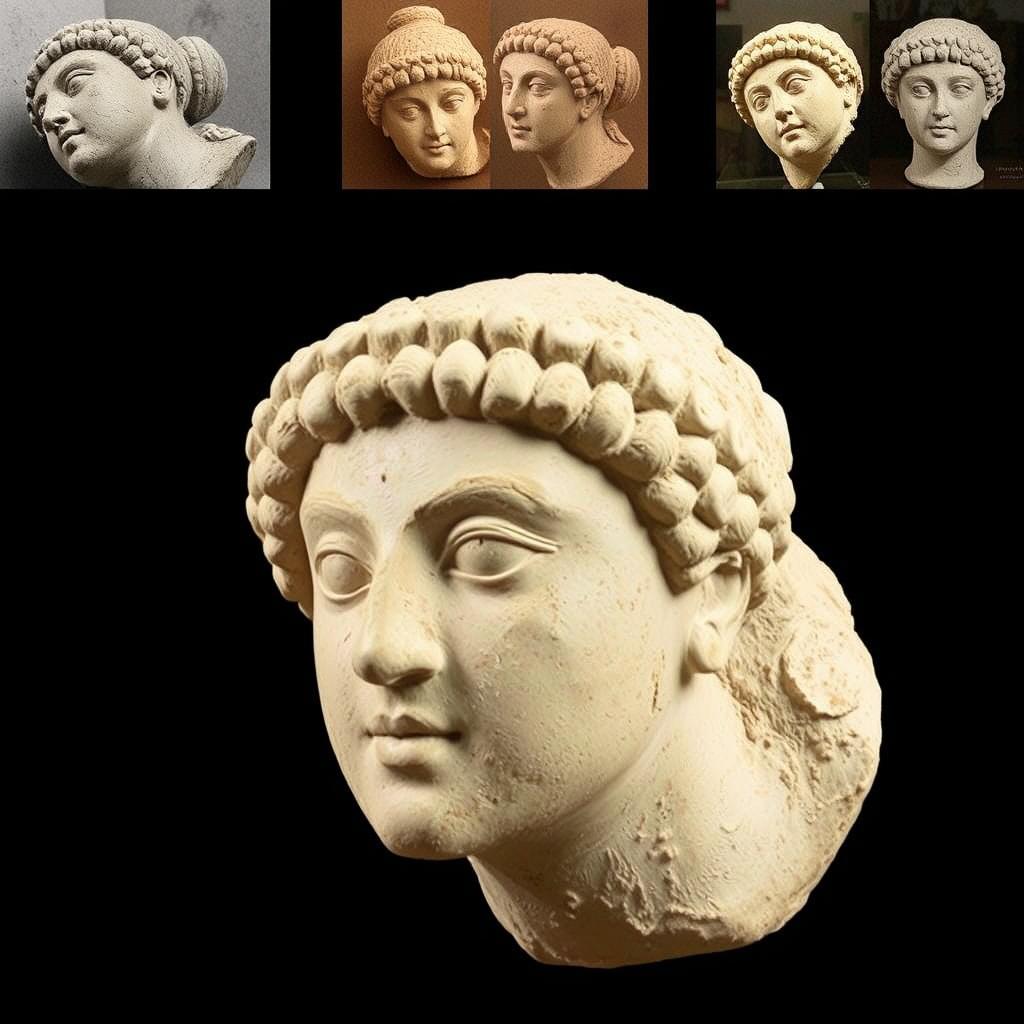
Stucco head demonstrating sculptural techniques

Traces of original paint visible on a Gandharan sculpture
Iconography and Symbolism
Gandharan art is rich in iconography and symbolism, combining Buddhist religious concepts with artistic conventions from multiple traditions:
- Buddha Images – Depicted with specific physical characteristics (lakshanas) that identify him as an enlightened being
- Bodhisattvas – Enlightened beings who delay their own nirvana to help others, shown with princely attire and jewelry
- Jataka Tales – Stories of Buddha’s previous lives, depicted in narrative relief panels
- Life of Buddha – Scenes from Siddhartha Gautama’s life, from birth to enlightenment to parinirvana (death)
- Greek Deities – Sometimes incorporated as guardian figures or decorative elements
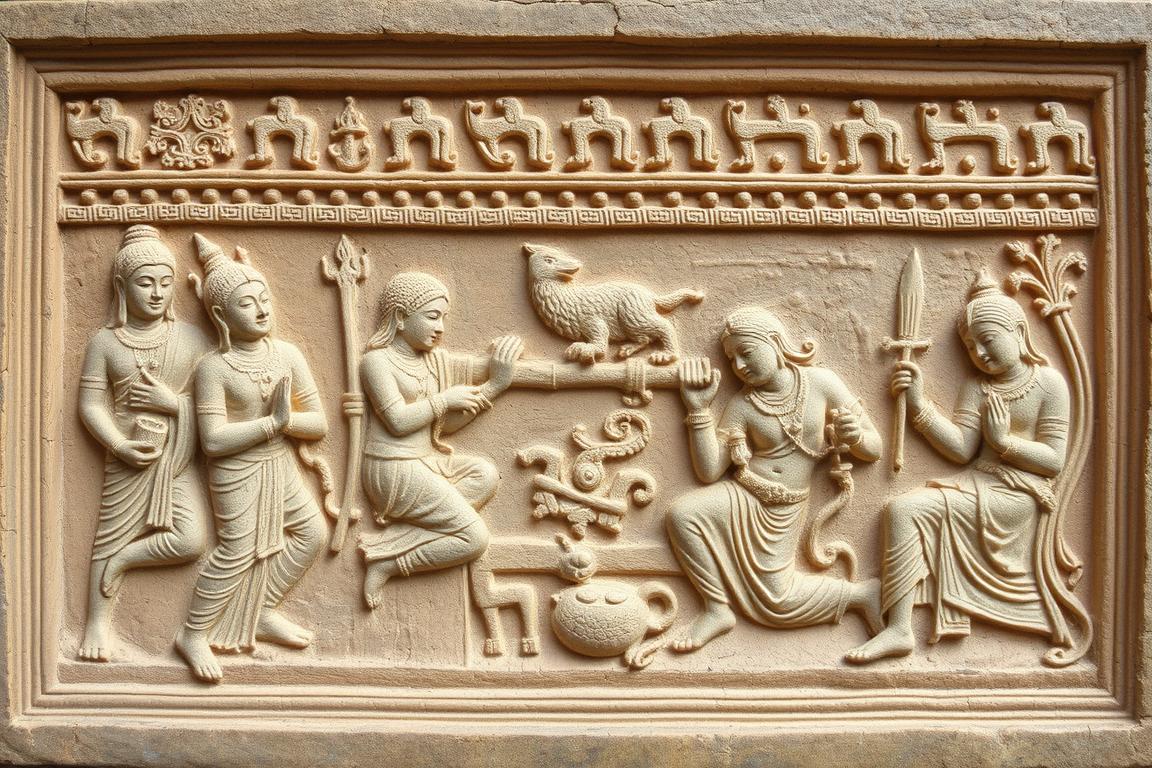
Relief panel depicting a Jataka tale with multiple figures and narrative elements
The Bodhisattva Maitreya (the future Buddha) was particularly popular in Gandharan art, as were depictions of the Bodhisattva Avalokiteshvara (embodiment of compassion). These figures were often shown with attributes that helped devotees identify them, such as specific hand gestures (mudras) or objects they carried.
Global Influence of Gandharan Art
The artistic innovations of Gandhara had a profound and lasting impact on Buddhist art throughout Asia. As Buddhism spread eastward along the Silk Road, Gandharan artistic conventions traveled with it, influencing the development of Buddhist art in:
- Central Asia – Cave temples at sites like Bamiyan in Afghanistan and Kizil in Xinjiang
- China – Early Buddhist sculpture of the Northern Wei and Tang dynasties
- Korea and Japan – Transmission of Buddha image types and artistic techniques
- Southeast Asia – Influence on early Buddhist art in Thailand and other regions
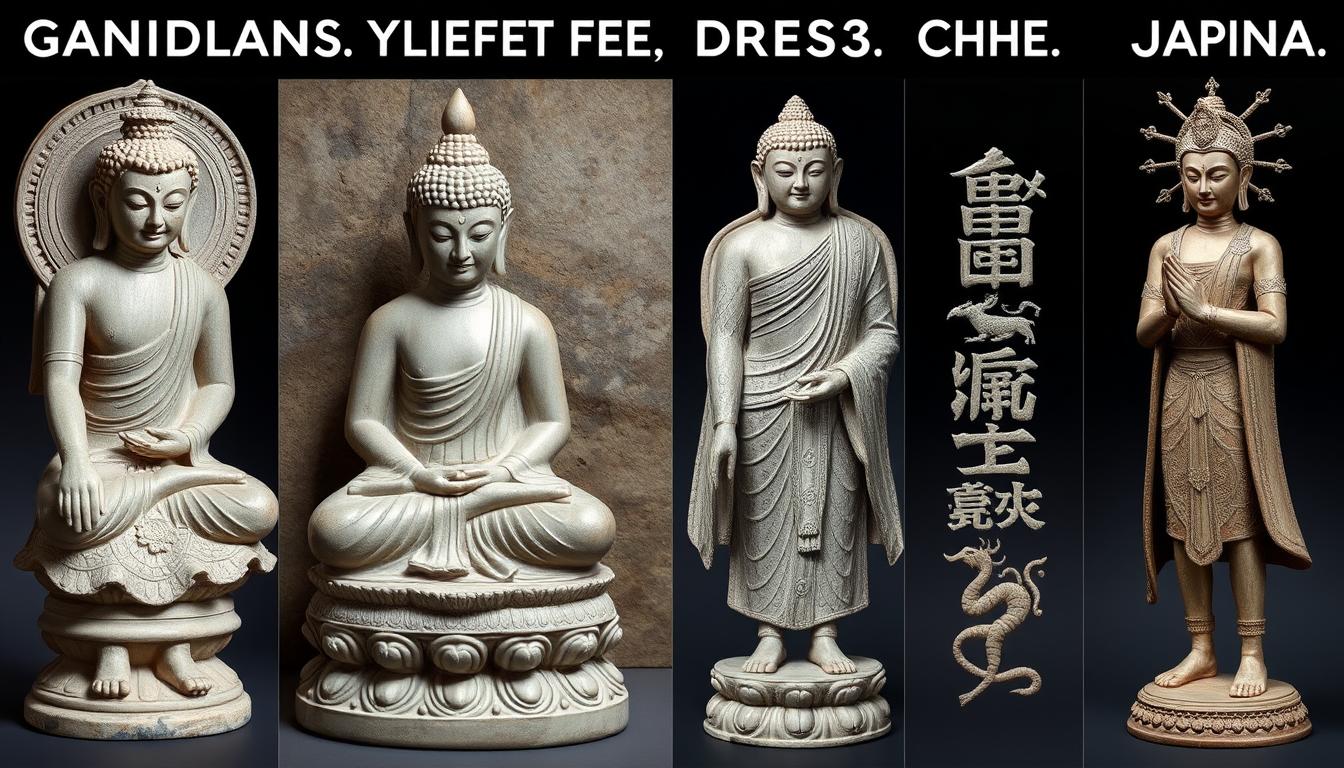
Comparison showing the influence of Gandharan artistic styles on Buddhist art across Asia
Even today, contemporary Buddhist art continues to reflect elements first developed in ancient Gandhara, making this artistic tradition one of the most enduring legacies of this remarkable civilization.
Decline and Rediscovery of Gandhara
The once-flourishing Gandhara Civilization eventually declined and was largely forgotten until its rediscovery in modern times. Understanding the factors that led to its downfall and the process of its archaeological rediscovery provides important context for appreciating its historical significance.
The Decline of Gandhara
Several factors contributed to the gradual decline of the Gandhara Civilization:
- Hun Invasions – In the 5th century CE, the White Huns (Hephthalites) invaded Gandhara, destroying Buddhist monasteries and disrupting the region’s cultural and economic life
- Religious Shifts – The gradual decline of Buddhism in India and the rise of Hinduism and later Islam changed the religious landscape
- Economic Factors – Changes in trade routes reduced Gandhara’s strategic importance
- Political Instability – The collapse of the Kushan Empire led to fragmentation and weakened governance
- Natural Disasters – Some evidence suggests earthquakes may have damaged key sites
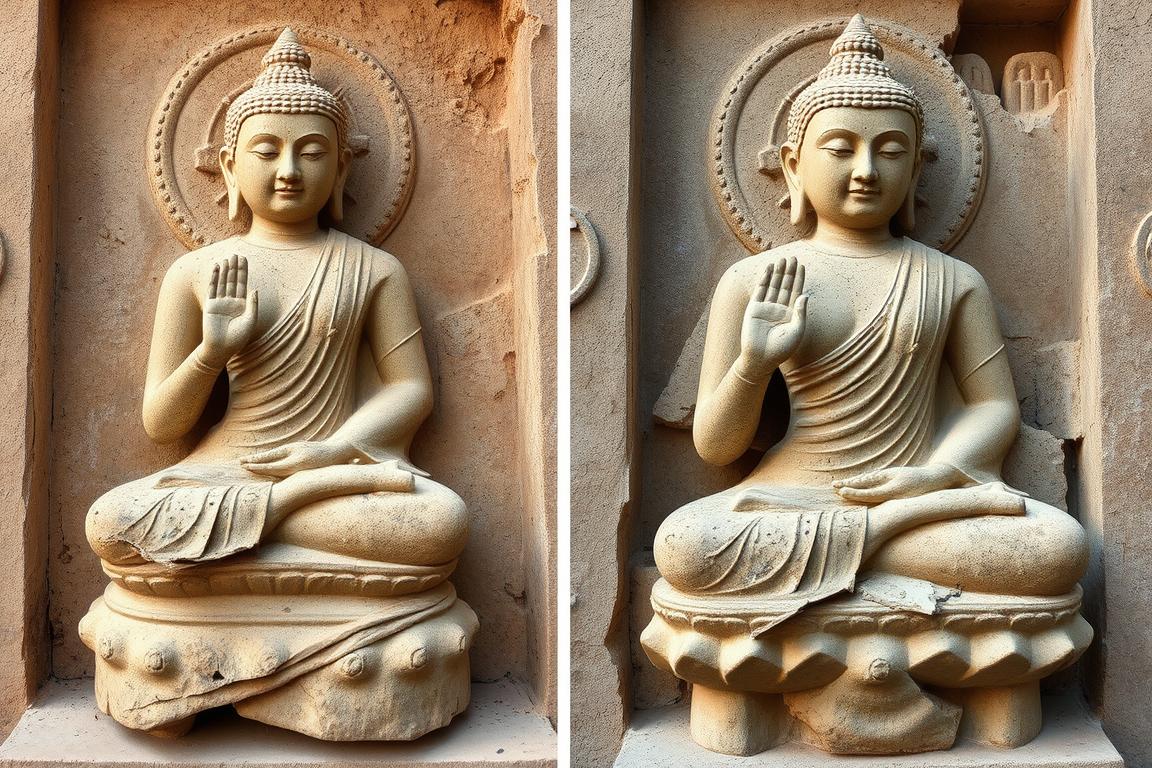
Damaged Buddhist sculptures showing evidence of deliberate destruction during the Hun invasions
The Chinese Buddhist pilgrim Xuanzang, who visited the region in the 7th century CE, described finding many monasteries in ruins and Buddhism in decline. By the time of the Muslim conquests in the 10th-11th centuries CE, the Gandhara Civilization had largely disappeared, with its cities abandoned and its artistic traditions forgotten.
Rediscovery in the Colonial Era
The rediscovery of Gandhara began in the 19th century during the British colonial period in India. British soldiers, administrators, and scholars became interested in the ancient history of the region and began documenting and excavating archaeological sites.

Early archaeological excavations at Gandharan sites during the British colonial era
Key figures in the rediscovery of Gandhara included:
- Charles Masson – An American explorer who documented numerous sites in the 1830s
- Alexander Cunningham – The first director of the Archaeological Survey of India, who identified many Gandharan sites
- John Marshall – Led extensive excavations at Taxila between 1913 and 1934
- Alfred Foucher – French scholar who developed theories about Greco-Buddhist art
These early archaeologists faced numerous challenges, including difficult terrain, limited resources, and the complexities of identifying and interpreting the remains of a civilization that had been forgotten for centuries. Nevertheless, their work laid the foundation for our modern understanding of Gandhara.
Modern Archaeological Work

Contemporary archaeological excavation at a Gandharan site using modern techniques
After the partition of India in 1947, archaeological work in the Gandhara region continued under Pakistani institutions. Significant contributions were made by Pakistani archaeologists like Ahmad Hasan Dani, who conducted important excavations in the Peshawar and Swat valleys.
Modern archaeological approaches have included:
- Scientific dating techniques to establish more precise chronologies
- Geophysical surveys to identify buried structures without excavation
- Digital documentation and 3D modeling of sites and artifacts
- Interdisciplinary collaboration with historians, art historians, and religious scholars
- Community involvement and public archaeology initiatives
These modern efforts have greatly expanded our knowledge of Gandhara, revealing new sites, refining chronologies, and providing deeper insights into the daily life, religious practices, and artistic achievements of this remarkable civilization.
Support Archaeological Preservation
The archaeological heritage of Gandhara faces ongoing threats from development, looting, and environmental factors. Learn how you can support efforts to preserve these irreplaceable cultural treasures for future generations.
Modern Relevance and Preservation Challenges
The legacy of the Gandhara Civilization continues to resonate in the modern world, both as a significant chapter in human history and as a cultural heritage that faces ongoing preservation challenges.
UNESCO World Heritage Sites
Several Gandharan sites have been recognized for their outstanding universal value and inscribed on the UNESCO World Heritage List:
- Taxila (inscribed 1980) – Recognized for its archaeological remains spanning several historical periods
- Buddhist Ruins of Takht-i-Bahi and Neighboring City Remains at Sahr-i-Bahlol (inscribed 1980) – Acknowledged as an exceptionally well-preserved example of Buddhist monastic architecture
These designations provide international recognition and some protection, but also bring responsibilities for conservation and management according to UNESCO standards.

UNESCO World Heritage plaque at Taxila archaeological site
Preservation Challenges
Despite their recognized importance, Gandharan sites and artifacts face numerous preservation challenges:
Conservation Efforts
- International funding for major sites
- Training programs for local conservators
- Digital documentation projects
- Museum improvements for artifact preservation
- Growing tourism interest generating revenue
Preservation Challenges
- Illegal excavation and artifact trafficking
- Urban development pressures
- Limited conservation resources
- Climate change impacts (flooding, erosion)
- Security concerns in some regions
The illicit trade in Gandharan artifacts remains a significant problem, with sculptures and other items appearing on the international art market without proper provenance. This not only removes cultural heritage from its context but also destroys archaeological information that could enhance our understanding of the civilization.
Museums and Cultural Institutions

Gandharan artifacts on display at the Peshawar Museum
Museums play a crucial role in preserving, studying, and presenting Gandharan heritage to the public. Key institutions include:
- Peshawar Museum – Houses one of the world’s largest collections of Gandharan art
- Taxila Museum – Located near the archaeological site, displaying artifacts from local excavations
- Lahore Museum – Contains significant Gandharan collections, including the famous “Fasting Buddha”
- British Museum – Holds important Gandharan artifacts collected during the colonial period
- Metropolitan Museum of Art – Features a notable collection of Gandharan sculptures
These institutions not only preserve artifacts but also conduct research, publish scholarly works, and create educational programs that help the public understand and appreciate Gandharan civilization.
Cultural Identity and Tourism
The heritage of Gandhara plays an important role in the cultural identity of modern Pakistan and contributes to the country’s tourism industry. Gandharan sites attract visitors from around the world, particularly those interested in Buddhist heritage, ancient art, and archaeology.
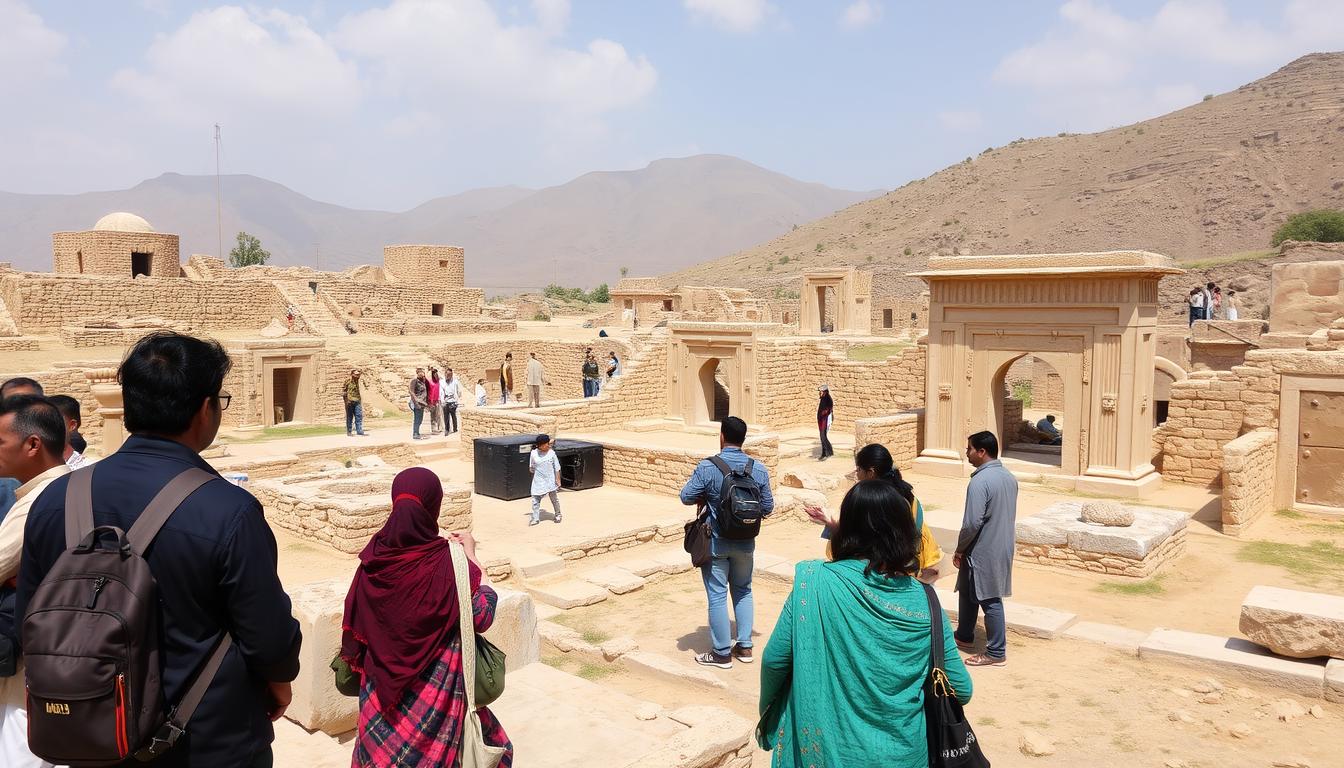
Tourists exploring a Gandharan archaeological site, connecting with the region’s ancient heritage
Tourism development presents both opportunities and challenges:
- Economic benefits for local communities
- Increased awareness of cultural heritage
- Potential funding for conservation
- Risks of over-tourism at fragile sites
- Need for sustainable tourism infrastructure
Contemporary Relevance
Beyond its historical significance, the Gandhara Civilization offers valuable lessons for the contemporary world:
- Cultural Exchange – Gandhara demonstrates how the meeting of diverse cultures can produce extraordinary creative achievements
- Religious Tolerance – The coexistence of different religious traditions in Gandhara provides a historical example of pluralism
- Artistic Innovation – The synthesis of artistic traditions shows how innovation often occurs at cultural crossroads
- Trade Networks – Gandhara’s role in ancient trade networks parallels modern globalization processes

Contemporary artwork inspired by Gandharan artistic traditions, showing the continuing influence of this ancient civilization
By studying and preserving the heritage of Gandhara, we gain insights not only into our past but also into the dynamics of cultural interaction that continue to shape our world today.
Conclusion: The Enduring Legacy of Gandhara
The Gandhara Civilization stands as one of history’s most remarkable examples of cultural synthesis and artistic innovation. From its strategic position at the crossroads of Asia, Gandhara absorbed influences from Greek, Persian, Indian, and Central Asian traditions, transforming them into something uniquely its own. The civilization’s greatest achievement was perhaps its role in the development and spread of Buddhism, creating artistic conventions that would influence religious art across Asia for centuries to come.
Today, as we face the challenges of preserving this precious heritage, we are reminded of Gandhara’s enduring lessons about the creative potential of cultural exchange and the power of art to transcend boundaries. The stone Buddhas, monastery ruins, and ancient cities of Gandhara continue to speak to us across the centuries, inviting us to appreciate the remarkable achievements of this civilization and to ensure that its legacy endures for future generations.
